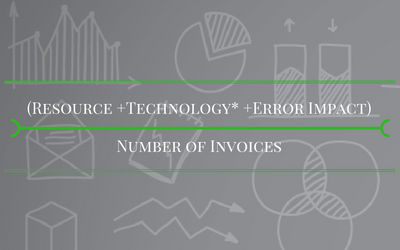What mix of invoicing is right for you?
Blog: Kofax - Smart Process automation
Invoicing strategy is not one-size-fits-all.
With so many invoicing methods from so many vendors, determining the best and most cost-effective method can be difficult. Invoices come in a variety of formats: paper, eInvoicing, EDI, XML, and from a variety of sources: networks, email, web portals, etc.
AP automation vendors and consultants tend to recommend one solution for the best return on investment. One vendor might say your solution is optical character recognition (OCR) for invoice data capture of paper and PDF invoices, while another will claim that a supplier portal will make it easier on your vendors and solve all of your challenges.
But how can just one solution make sense for both your organization and your suppliers?
What’s at stake?
Invoice processing times cost per invoice processed, and your ability to capture early payment discounts all relies on your invoicing mix.
According to a recent report from Ardent Partners, 41% of AP departments say one of their top priorities is reducing processing costs. In the same report, Ardent found the average cost to process an invoice in 2016 is $13.04. Meanwhile, best-in-class AP teams are managing to achieve per-invoice processing costs that are 81% lower and processing times that are 77% faster than their peers.
This is why it’s important to put together an invoicing strategy that makes sense across your supplier base with the ultimate goal of minimizing the total cost of the invoice lifecycle.
Understanding the cost
How do you calculate the right invoicing mix to drive the lowest total cost of ownership? First, look at where your invoicing costs come from your process choices, people, technology fees, storage, third-party fees, suppliers, penalties for late payments and missed discount opportunities. It’s important to think about, and account for, all of the tasks involved in processing an invoice when you’re calculating the cost.
You can use this formula to get your cost per invoice:

*If the technology has implementation fees, calculate the total cost over an anticipated lifespan of the solution.
The solution: A commodity approach
We solved the invoicing mix dilemma by thinking of invoices by commodity. Instead of basing our invoicing strategy on the source or the format of the invoice, we match our process to the commodity class. Here’s how it works:
Example 1: General Purchasing
At Lexmark, general purchasing covers a lot – from staplers to coffee. There are almost no contracts and there’s high supplier turnover (70% turnover). With this commodity, spend is less likely to be P.O.-based. This accounts for 67% of our vendors and 45% of our transactions, but only 1% of our spend. With 5,600 new vendors every year, it doesn’t make sense to spend a lot of time onboarding these suppliers. Therefore, Lexmark uses an invoicing mix of mostly email, and some supplier portal, for general purchasing.
Example 2: Logistics and Warehousing
Logistics and Warehousing account for 6% of our vendors, but these are typically long-term strategic suppliers with contracted or quoted rates and lower turnover (3% turnover). There’s a higher volume of invoices with limited mismatches, and this accounts for 30% of our spend. For Logistics and Warehousing, it makes more sense to spend the time to onboard suppliers and for Lexmark to use a Supplier Portal for invoicing.
One size does not fit all
In summary, your invoicing mix strategy can’t be driven by your suppliers. Approach your invoice needs by commodity classification and realize that a “one size” solution may not drive enough cost out of the process across your organization. The key to making your strategy a success is working closely with procurement to align on a strategy that delivers the best return for your organization.
We understand that one size doesn’t fit all and has the right mix of solutions to automate invoice processing for any size operation. When you’re ready to talk about your invoicing mix, let us know.
Leave a Comment
You must be logged in to post a comment.







